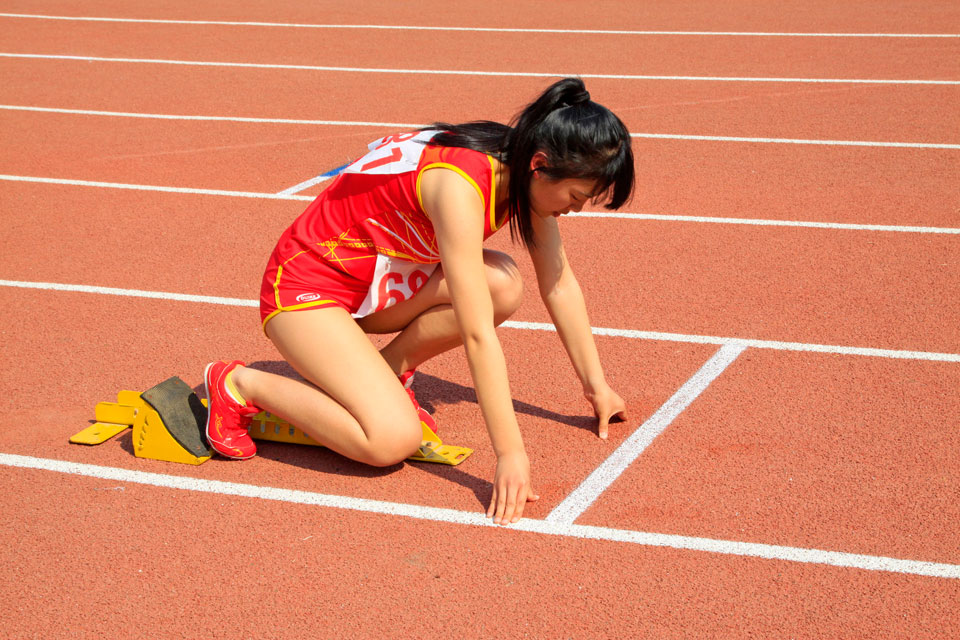Habits shape a whole lot about how events unfold around us each and every day. For athletes, habits and lifestyle can constitute the difference between the longevity of individual careers. It is not new to hear athletes still performing at advanced ages attribute the possibility to their choice of habits which dictates the kind of lifestyle they pursue.
Injuries are one of the biggest fears a sportsman or woman harbours, they can do more than physical damage, the damage can also get to a mental extent especially when it occurs in the prime of their career. This article talks about 5 habits runners need to develop to avoid sports injuries, and not “the” 5 habits. There exist a lot more that could be developed, but here are five of them that will do the job.
Good Posture
Maintaining a good posture while sitting and standing is very important to runners’ fitness at every point in time. Walking for a couple of minutes before beginning actual practice or workout is very helpful, while sitting posture can determine the risk of developing back injuries.
A bad sitting posture keeps the back in an already bad shape and amplifies the risk of becoming full blown injuries during practice or while working out. If a runner must sit for extended periods of time (e.g. for a meeting), then he/she must make sure they are sitting well and tall. Hunching over while sitting is a shortcut to back discomfort and when repeated too often can cause a loss of normal back curvature and possibly disc herniation.

This piece advice is also very important when recovering from an injury lay-off or after extended periods of inactivity (vacation, for example). Walking around for a few minutes can help to counter the effects of extended sitting and inactivity – the worst of which is a blood clot – which can potentially lead to death. It also helps to free up sedentary muscles, and gradually bring them up to speed.
When it comes to injury prevention, the worst mistake as regards nutrition is not consuming enough calories. Inadequacy of calories needed for energy and tissue maintenance will push your body into catabolism – a state where the muscles begin to eat themselves, consequently diminishing the body’s ability to repair tissue damages sustained during workout and turning such into full-blown injuries.
A runner’s eating habits should also take into account the balancing of his/her diet in order to prevent injuries.
Insufficient calories or imbalanced diet can be observed in performance during training or workout, a runner on a new diet which doesn’t provide adequate nutrition will notice a dip in his/her workout performance, and previous marks will become difficult to emulate.
Always Refer To An Expert
When in doubt, always try to see an expert about unclear issues relating to your fitness. It is very easy to misunderstand the signs that your body may be giving you like minor pains and strains, all of which can be a sign of something bigger going wrong or about to go wrong behind the scenes. Expert physiotherapists can help to pre-empt the occurrence of injuries by helping to spot and avoid burnout, muscle fatigue and so on.
Take One Step At A Time
It is true that every athlete relishes the opportunity to break new ground, it is also true that many athletes have cut short their careers with avoidable injuries by pushing too hard when their body wasn’t completely ready.
Running an extra mile can be done gradually, taking it a few hundred metres at a time rather than going straight for the target. By taking it gradually, the athlete’s body is able to condition itself to the new realities and makes adjustments that make it possible (and easier) to maintain that level, once achieved and to push forward again when ready.

Rushing into the extra distance however, will leave the muscles (and the whole system of the body) in new, unfamiliar terrain, without the requirements to safely handle the rigours that present itself. A lot of preparation in terms of training, diet and mind conditioning is necessary in the quest to break new ground, they might take a while to put in place, but they are too crucial to be ignored if a catastrophic injury is to be avoided.
Proper Sleeping Habits
Sleep is an essential part of an athlete’s development, it helps in rebuilding the body and assists in keeping performances at a high level for extended periods of time consistently. Averaging nine to seven hours of sleep every day and waking up at the same time every day is very beneficial. Also, it is important to work on habits and techniques that help in eliminating anxiety and stress before sleep in order to improve the quality of sleep. A well-rested body before a competition or meet is an oiled machine raring to go, with a minimal risk of injuries. Not so much can be said of untested athletes.
Along with the habits mentioned above, other little things such as ascertaining kit sizes before racing, ensuring equipment are in good shape and so on can help to prevent “little” injuries (there are no little injuries) like blisters, strains and the likes.
Injury prevention is a daily activity and it’s a necessity that cannot be ignored, so while you prepare for your next competition, take care to ensure that injuries do not ruin the possibilities of glory for you by adjusting your habits and lifestyle. And if you’re already doing these things, keep them up. Break a leg! Or not.
Want to learn more about sports injuries, check this sports injuries resources to get tools, articles, books that will help you stay away from injuries, and also how to face them.





